MUMBAI DRIVE-BY
- Hannah McDonald

- Feb 8, 2018
- 12 min read
Updated: Jun 10, 2022

Today's tour of Mumbai was a whirlwind: there were so many sights and stories packed into just six hours. I think the best way to take you through our day is to take you on the tour with us, stop by stop. Dad and Prerna were with us for breakfast, but then Mom, Joey, and I left for our "Magic Mumbai" tour. This blog post will go through each stop both on our tour and in our day. At the end, I will write some "bonus material" for memorable experiences and stories that do not quite fit in specific "stops" of the day. Unfortunately, due to the fast pace of the car tour, we were not able to photograph some of the moments that are stuck in our minds, so you will have to use your imagination. Given that it is a lenghy post, I will provide a list of my favorite sections, so those who are looking for a quick read can easily jump around. I hope you enjoy your Mumbai tour!
The Stops (if italicized, I recommend it):
Breakfast
Tour Departure
Into South Mumbai
Mumbai Ambani Antilia
Mani Bhavan
Victoria Terminus Train Station
Gateway to India
Taj Mahal Palace Hotel
Sasson Dock
Afghan Church
Dhobi Ghat at Mahalaxmi (The "City of Laundry")
Port of Mumbai
Oval Cricket Ground, The Rajabai Clock Tower, Mumbai University, and Bombay
High Court
Marine Drive
Hanging Gardens
Lunch
"Bonus Material"
Breakfast
In the United States, a hotel breakfast does not particularly jump out as something for guests to look forward to, but rather just a free breakfast. Mom was expecting our Marriot breakfast to be similar, a typical American breakfast–nothing special. We were proven very wrong as we entered the dining area. Prerna was downstairs at breakfast, waiting for us. Upon seeing us, she jumped up in excitement, ready to give us a breakfast tour. The buffet was full of traditional Indian breakfast foods, along with some typical American ones for the less adventurous. Prerna took us through each area and helped us load our plates with samples of each dish she thought we should try. The chefs were wonderful and made special dishes for us that were vegan, although it was not difficult to find vegetarian dishes. Prerna is vegetarian too, but with a few dishes, I double-checked. She simply responded, "yes, everything is." How unique it is to not have to search for vegetarian food! Everything was delicious, although a little spicy for my weak taste buds. Joelle, though, is determined to convert her taste buds to "iron taste buds" throughout the trip. Some of our favorites from breakfast included Samosas, Masala Dosa that they made special for us, Uttapam, Cutting Mumbai Chai made with soy milk, a bean dish served with a roll, and Kheer. However, we tried much more than this. It may have been the biggest, most delicious, and spiciest breakfasts I have ever had, and we were very fortunate to have Prerna there to guide us.
Tour Departure
In the short time that I have been here, I have concluded that trust is not automatically given, as it may be in the US, but rather hesitantly relinquished. It seems necessary to be extra cautious. Our tour guide met us in the hotel lobby, and Prerna was sure to immediately get his name and contact information, ensuring the guide knew that she knew who he was. If anything were to happen, she would have the resources needed to help us. Prerna has been so sure to take good care of us and to help us around, and we are very lucky to have her. We would definitely be lost without her guidance.
Into South Mumbai
For this "Magic Mumbai" tour, we have our guide, Sunny, and a driver. Although we are staying in Mumbai, we are not in "proper" Mumbai. To get to South Mumbai, we crossed a famous bridge that goes around the city and drove about an hour. As we began to cross the bridge, which expedites the route from one part of Mumbai to the other part, Mom spotted colorful local homes on the hillside. They popped out of the hill and caught the eye. As the city zoomed by, we took in our surroundings, noting the impoverished homes and the tall buildings.
Mumbai Ambani Antilia
Driving into the central part of Mumbai, Sunny pointed out a very tall, glass building, informing us that it is a private apartment. From afar, it looks like the number three. Sunny asked each of us how many people we thought lived there, Mom answered six, me four, and Joelle stated that it should house 600 people. In a way, both Joelle and I were correct. Four people live in the apartment (Mukesh Ambani and his wife and their son and daughter) while 600 people work to maintain the tower and also live there. There is a six-level parking garage with 233 cars, a McDonald's, and a movie theater all in the tower. There are three helicopter pads on the roof, but they cannot be used as there is a hospital nearby. The entire tower took $1 billion to build, and the apartment at the top of the tower is made of glass. Mr. Ambani is a successful businessman and earned his large amount of money through his business work.
Mani Bhavan
This house belonged to a friend of Ghandi, and he too lived there for some time. The house is located at 19, Laburnum Road, Gamdevi, Mumbai - 400 007. From this house, Ghandi lead many of his movements toward a free India. Ghandi was entirely against war and utilized only non-violent methods to create progress–particularly marches and fasts. In the house now, the first floor is a library, consisting of more than 50,000 books on and by Ghandi, Ghandhian thought, and associated subjects. As you may imagine, Joelle immediately fell in love with the smell of old books. Both a picture and mini-figure gallery are on display as well, giving viewers glimpses into Ghandi's life and his work. Here, Ghandi quotes can be found in addition to photos, letters he wrote to Hitler and Franklin D. Roosevelt, and other snippets of information. On another floor, Ghandi's room and workspace has been preserved. There are not many possessions in the room, which makes sense because Ghandi did not have many possessions. It is a basic room with a small mattress on the floor, a desk, some spinning wheels, and some shoes. The house also contains a terrace and an auditorium. The house is now recognized as a research institute by Mumbai University. It was special to be able to walk through the house and recall Mrs. Tucker's lessons about Ghandi my freshman year. The information is much fresher in Joelle's mind, so she helped remind me. We learned that the spinning wheel, which is now on India's flag and was spoken about by Ghandi so much, is the symbol of salvation for India's starving millions on the economic and moral regeneration of India.
Victoria Terminus Train Station
Now known as CST and Municipality Building, this train station services over 2 million of Mumbai's 22 million people daily. The building used to be Queen Victoria's palace but has since been converted. Traffic rushes by in front of the station, but the details in the old-appearing building make clear how historic the building is.
Gateway to India
What now stands as the gateway to India was not the original. Originally, the gateway was made of Plaster of Paris, but in 1924, it was rebuilt with stone because of how liked the gateway was. King George V and Queen Marry always entered India through this gateway, and when the last British troop left India, they departed through this gateway. Following the final departure of the British, the gateway was closed and it has not been used since. Today, it is a tourist attraction. Prior to entering, Sunny warned us that people would ask to take pictures with us and informed us to decline. Sure enough, a man walked up to shake Mom's hand, and Sunny immediately stuck his arm out to prevent the encounter. There were several more similar instances, but Sunny kindly protected us from it each time.
Taj Mahal Palace Hotel
Near the Gateway to India stands the Taj Mahal Palace Hotel. It is one of the most expensive hotels in Mumbai. In 2008, it was hit by the terrorist attack. Now it is clear where the hotel was hit, as three floors look slightly different from the others.
Sasson Dock
This dock was used as the British's entrance into India before the Gateway to India was built. Driving into this fishing town, I was initially taken aback, seeing a women chopping up a whole, raw fish from a pile she had next to her. As we continued, I was fascinated by the colorful fishing boats. Here, fisherman go out at night to catch their fish. In the morning, the market opens at 4:00am and runs until 9:00 or 10:00am. At 6:00am, Sunny said that it is nearly impossible to walk through the streets, as the market is so busy. Of the fish caught, 30% stay within India while the other 70% is exported to countries that do not have sea access. I asked to get out of the car to take a picture, which is when Sunny warned us that it smells strongly of fish. This, however, was an understatement. The stench was so remarkably powerful and overwhelming that it was almost unbearable. I took my pictures quickly and then hopped back into the car where Sunny and the driver sprayed cologne to get rid of the fish-stench in the car. Driving out of the town, we saw women shelling prawns on the ground. I wish we had a picture: all the women's colorful garments against the colorful building would have made for a good, unique photo, but by the time we registered what was happening, we missed the opportunity.
Afghan Church
This church was built in Mumbai in memory of the British and Afghan soldiers who died in India's first defeat battle victory. In the church, slots can be seen at each seat for the men to place there riffles, and at the end of each row, there is a place to put the regiment's flag. In the front rows, slots for the riffles do not exist, as that is where the officers sat. The soldiers, with their riffles, sat in the back rows. The church is still used today on Sundays, and Prince Charles and his wife Camilla have both been there, their seats now marked with plaques.
Dhobi Ghat at Mahalaxmi (The "City of Laundry")
Hopping out of the car, we walked through an alleyway, and I was shocked to see what was on the other side: a ton of hanging laundry, stuffed sacks, and many concrete basins in the ground filled with water. This is where the laundry gets done. Workers wash the laundry in the large, concrete, square basins and then hang it to dry. One washer lifted the clothes above his head and slapped them against the water, making circular motions, while others scrubbed the clothes. Those who needed their clothes washed faster had their laundry done in machines, although the machines they use are nothing like the ones we have in the US. The guide walked us through the area, but we got many strange looks from those working. This was a unique glimpse into the lives of those who live in India.
Port of Mumbai
We did not get out at this stop, but we looked at it from the road. This port is memorable for the people of India because it is where the 2008 terrorist attack began. The terrorists hijacked a boat at sea and approached the Port of Mumbai. From there, the terrorists hijacked four cars and drove them to separate locations for attacks over a four day period including the Taj Mahal Palace Hotel, Victoria Terminus Train Station, and the Leopold Cafe. The terrorists came from Pakistan and killed 164 people and injured over 300 more. Today, there are cameras at the port.
Oval Cricket Ground, The Rajabai Clock Tower, Mumbai University, and Bombay High Court
Cricket is an extremely popular sport in India, and you can see it being played all over the city. The British built the Oval Cricket Ground for them to play cricket, but now it is one of the most famous parks for Indians to play cricket at. Just behind the cricket fields, what appears to be Big Ben stands tall. This building, the Rajabai Clock Tower, was built by a British architect, replicating Big Ben, and was once the tallest building in Mumbai. To the side of the tower, is Mumbai University. Here, only university offices can be found. The students attend classes in a different location. On the other side of the clock tower is Bombay High Court.
Marine Drive
Also known as the Queen's Necklace due to its shape, Marine Drive is a popular hangout place in Mumbai. It looks over the Arabian Sea and, as Sunny said, is the place for couples. There is a man-made beach toward the end of the drive that was built due to the lack of beaches in south Mumbai and the heavy traffic leading to those in the north. Despite the beach, the ocean water is not swimmable due to pollution. The air pollution was also evident, as you could hardly see the city and beach on the other end of the "Queen's Necklace" through the smog. Discussing couples, as Marine Drive is a popular place for them, Sunny brought up Valentine's Day. Valentine's Day is celebrated here in India, but rather than being just a day, it lasts a week: February 7th is Rose Day, the 8th is Proposal Day, the 9th is Chocolate Day, the 10th is Teddy Day, the 11th is Promise Day, the 12th is Hug Day, the 13th is Kiss Day, and the 14th is Valentine Day. As Sunny puts it, it is an expensive month for the boys.
Hanging Gardens
These gardens are supposedly build on top of water tanks near the Tower of Silence, although I did not notice that. The area used to be entirely forest, and the British brought foxes in to hunt. Bats hung from the trees, which is why the gardens are called Hanging Gardens. Today, this is one of the richest areas in Mumbai. The gardens are beautiful, and many people roam around them. Next to the garden, the place where the Persian people hang their dead can be found. These people moved from Persia to India because the Persian government was forcing them to convert to Muslim. This is a small, closed community of 35,000 to 40,000 people here in India. Their way of cremating is to hang the dead from trees and to let nature take care of it from there.
Lunch
We returned to the Marriot for lunch and had some vegetarian Indian dishes with Naan bread. Despite the waitor's automatic cautioning against spicy dishes, we ordered an appetizer that was too spicy, even for Joey's developing "iron" taste buds. Although I could not tell you what it is we had, the rest of the food was delicious.
"Bonus Material"
Although driving through the city streets is nowhere near the same as walking through them with the people, we got a good glance at the city and the people who live in it. Keep in mind, we are lucky to be in an air-conditioned vehicle. Each time we got out, the heat coupled with the humidity was sweltering. It was a different view of the city, but it was much cooler. Driving through the central part of Mumbai, we got glimpses of locals in their daily lives. Children were walking to school, workers were on their way to work, and the street-side shops were busy. Motor scooters are constantly weaving in and out of the cars, sometimes barely sneaking through, and people walk freely through the streets, some without shoes. On one motor bike, there was a man driving, a women sitting behind him, and a little boy in front of him, laying stomach down on the motor bike. Despite Mom pointing out the danger, it was adorable, and I wish I had a picture. Continuing through the city, each time we stopped, beggars and sellers would approach the window. Although sad, it was easy to shrug most off by simply looking away. However, one young boy broke my heart. He came and looked in my window with a sad, desperate look. Knowing I could not give him money, I looked away as I tried to do with the others. I knew though that this little boy was still standing right there, and I could not get his look out of my head. As we started to drive away, he tapped my window in one last hope, and my heart broke. That moment and the young boy's expression will now be with me forever. As we kept driving from stop to stop, I saw some young boys playing soccer on the sidewalk, and I could not help but smile. In several locations, we saw cows and goats just standing on the side of the road. The cows were tied up and used solely for the purpose of milk. I feel bad for the cows, as there are no pastures near by. Honking the car horn is common here, everyone does it. However, I would occasionally see a sign encouraging people to stop honking. I could not help but laugh when I saw these because it is such a such a constant sound, and it does not appear to be going away anytime soon. On our way back to the hotel, Mom, from the back seat, said, "Hannah, look away, look away." Not knowing what to look away from, I naturally started looking around me. A man in the car next to us was trying to take a photo of me. It was quite an uncomfortable experience. We seemed to draw looks and attention everywhere we walked, and drove apparently. To top is off, the man driving the car was in a "Mobile Morgue" car. I am not sure what to think of that. Sunny and I are now friends, though. Getting out of the car at one of our stops, he opened the door for me, and I thanked him. He responded, "You don't have to say thank you. We are friends." I now have both friends and paparazzi in Mumbai.
That does it for today! If you made it through the whole Mumbai tour, congratulations! If not, I do not blame you. I am exhausted, and Mom and Joey are both currently sleeping. Rest up, though: the second day of the tour begins tomorrow morning at 8:00am.



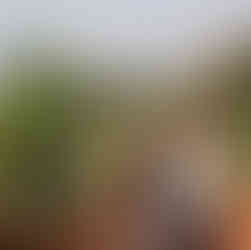



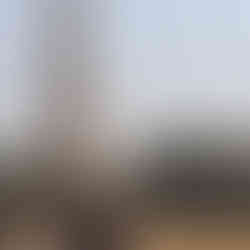











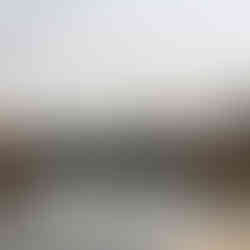




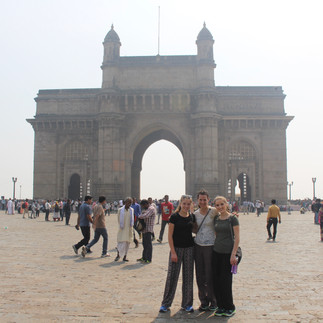
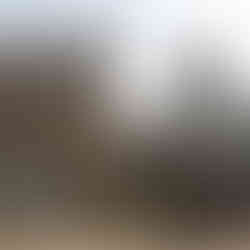




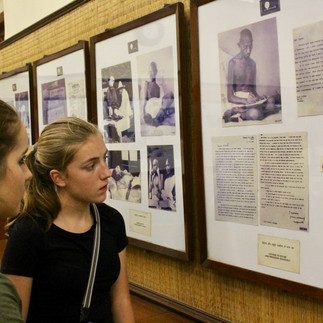


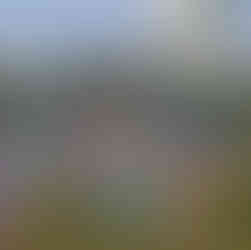



Comments